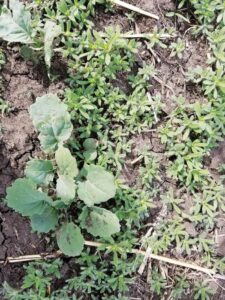How to elevate yields?
Canadian average canola yields peaked in 2016 at 42.3 bu./ac. It was a good year, weather-wise. Moisture was normal to above normal all across the Prairies, even in the Brown soil zone. In fact, some of the best yields in 2016 came out of the Brown soil zone. And temperatures were moderate. Most of the Black and Grey soil zones had no days over 30°C.

Since then the Prairies have experienced a lot more summer heat and a lot less growing-season rainfall. Crops suffer without rain, and canola especially suffers with hot weather at flowering.
Canola yields have faced challenges from 2017 to 2023, not exceeding the 2016 crop and averaging less than 40 bu./ac. for the past three years.
How to elevate yields
Weather clearly caused the plateau in Canadian canola yield. We know this because wheat, barley and pea yields followed almost identical patterns. But why is the plateau 40 to 41 bu./ac. when genetic potential for the crop is much higher? Why not a plateau of 45 or 47? The answer is likely related to agronomy.
Nutrient management
You could argue that growers are fertilizing for the crop they’re getting. A 52 bu./ac. canola crop removes 130 to 220 lb./ac. of nitrogen, according to the latest guidelines developed by now retired University of Saskatchewan researcher Fran Walley. Yet 2017-21 average nitrogen rates for Canadian canola were 119 lb./ac., according to Fertilizer Canada grower surveys. Basically, growers are fertilizing for a 41 bu./ac. canola crop.
Fertilizer Canada grower survey data also shows that “actual” yields are fairly close to the average “target” yields for the Black soil zone, suggesting that growers are perhaps setting yield targets that are too low for the yield potential in that soil zone. What would happen to yield and profitability if growers pushed nitrogen (and overall fertilizer rates) a little higher? In some cases, growers could achieve profitable gains simply by applying 100 per cent of the recommended fertilizer rate based on soil tests.
Pest management
Blackleg is going up and many farms could be underestimating yield loss. Think about genetic resistance.
Blackleg is on the rise again. This will be having an effect on yield.


Kochia Photo by Ian Epp
Early weed competition will be reducing yield – especially if those weeds take up critical soil moisture. Early weed control is an important step in profitability. It may be better to pencil in two in-crop sprays, starting with an early application at the one- to four-leaf stage of the crop. Follow up with a second spray at the back end of the label window, if necessary. It may not be necessary if the canola canopy closes in.
Glyphosate-resistant kochia is taking up more acres, often getting a toe-hold in areas of a field where crop growth is limited due to soil productivity limitations.
Genetics
Not including 2016, canola yields are generally quite a bit lower in the Brown soil zone than in the Black soil zone. Could growers choose earlier-maturity cultivars and plant them early in the season so the crop doesn’t flower during the hottest summer days?
We encourage growers to try at least one new cultivar each year, ideally in the same field as their preferred cultivar, seeded the same day with the same fertilizer practices, to compare results.
Try cultivars with different blackleg resistance in fields where blackleg seems to be getting worse.
Crop rotation
Tight rotations will reduce yield. This is proven in research trials and in crop insurance data.
Other factors
Through Canola Council of Canada survey results and feedback from personal conversations, here are a few common agronomy decisions that lead to lower yields:
- Too few plants per square foot
- Recreational tillage
- Unprofitable/unproductive acres
- Soil compaction
- Seed lost during harvest
- Swathing too early
PDF: Number of Days with Temperature above 30 degrees celcius in 2026
PDF: Percent of Average Precipitation in 2016
Profitability
Canola and wheat profitability have been falling in the past few years, related to lower commodity prices relative to inputs. These profitability signals are likely reducing investment in the crop, particularly fertilizer rates.
Agronomy should improve profitability, especially if input decisions are made with an eye to the bottom line. For example, growers could set a fertilizer rate based on expected yield and then use in-crop top ups if the moisture situation and yield outlook improves. That way the crop has the nutrients to match the new yield potential. Pest management decisions based on scouting and economic thresholds are more likely to provide a return on investment. Early weed spraying costs the same as later spraying, but tends to result in higher yields.
Growers cannot save their way to profitability. This was the message from an Agriculture and Agri-Food Canada inputs study led by Bob Blackshaw a decade ago. Canola needs an adequate seeding rate to reach five to eight plants per square foot, and those plants need timely fertilizer and risk-recommended crop protection.




